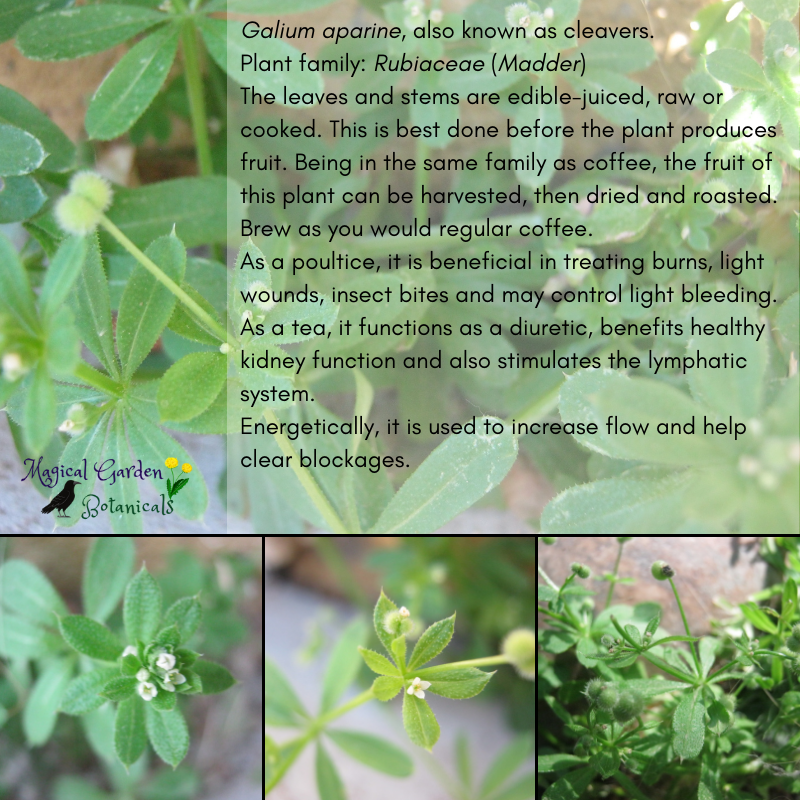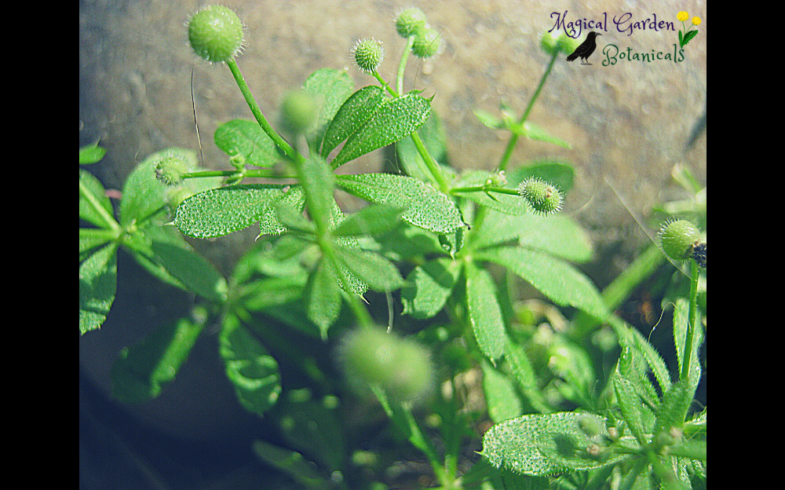Could There Be Coffee Growing in Your Yard?
Did you know that a plant that belongs to the same plant family as coffee may be growing in your yard? Galium aparine, also known as cleavers, is part of the Rubiaceae family. The fruit of this plant can be harvested, then dried and roasted. Brew as you would regular coffee. However, this is a tedious process. Thankfully, there are more useful benefits to growing and harvesting this plant.
The leaves and stems are edible-juiced, raw, or cooked. This is best done before the plant produces fruit. As a tea, it functions as a diuretic, benefits healthy kidney function, and also stimulates the lymphatic system. As a poultice, it is beneficial in treating burns, light wounds, insect bites, and may control light bleeding. Cleavers can also be made into a tincture. As an ointment, it is beneficial for the healing of ulcers, cysts, and other skin conditions. The root can be used to create a permanent pink to red dye. A wash can be made with the leaves and used to treat a sunburn and other types of skin irritations. An excellent plant for detoxing the body, cleavers makes its appearance in the spring- a time when many are thinking of “spring cleaning” not only their homes but their bodies as well. Additionally, on an energetic level, it is used to increase flow and help clear blockages.
Properties:
- Alterative
- Anti-inflammatory
- Astringent
- Diuretic
- Febrifuge
- Tonic
- Vulnerary
Cleavers is widespread. It is often found growing in hedges and clinging to other plants. It is fairly easy to identify by the velcro-like stickiness of the plant. The slender leaves grow in a whorled pattern of 6 or 8. It has small white 4 petaled flowers. The seeds are covered in tiny bristles and they look like fuzzy green testicles. These are just a few of the distinguishing features of this plant. Please be aware, that some people may experience skin irritation from touching this plant. If so, please do not ingest. There are some similar looking plants, namely sweet woodruff (Galium odoratum). It is always wise to thoroughly learn about a plant before harvesting. Be aware of the benefits and precautions of any type of plant that you are working with. Be mindful to not over harvest the plant and always leave some intact plants. Also, avoid areas that may have been sprayed with chemicals and roadsides or high traffic areas.

As with any supplement, always consult a qualified health professional prior to making dietary changes, especially if you are on any medication or are experiencing health issues.
Sources:
https://plants.usda.gov/core/profile?symbol=gaap2
Elpel, Thomas J. Botany in a Day: The Patterns Method of Plant Identification. Pony, MT: HOPS, 2004. Print.
Bown, Deni. New Encyclopedia of Herbs & Their Uses:. London: DK, 2001. Print.

Daughter of the Earth, Mother of her creations. Ivanna (Evie) doesn’t care for titles, but the ones that fit best are homeschool mom, herbalist, and blogger. Her greatest joy is guiding others to find true wellness within themselves and Mother Earth. When not spending time with her beloved family, she can be found researching everything related to holistic wellness, crafting herbal remedies, or visiting with the plants in the Magical Garden.





Response to "Could There Be Coffee Growing in Your Yard?"
Hahahaha!!! Fuzzy green testicles!!! 🤣
An amazing read as always! Thank you so much for this wealth of information. Our planet is so magical!!! 😍😘
Thank you for reading, Mona! Great description, huh? Now when you see it, you will know. 😀